Dadaism was an avant-garde movement established in response to the horrors of World War One. It was an anti-art movemtn which aimed to mark the disillusionment and absurdity of hte times they were living in. The dadaism movement came in multiple forms, ranging from art and music to fashion and poetry.

The artwork that came from this movement is often described as having strong political tones, as well as being ‘absurd’ ‘unconventional’ and ’empty art’.
A few founding principles of dadaism are:
- Humour
- Spontaneity
- Paradoxical (having contradictory features)
- Irrationalism
- Artistic freedom
Dadaism aimed to show the faults in society’s idea of progress. The Dada movement rejected capitalism and authoritarianism. Marcel Duchamp was the most prominent artist from this movement who exemplified these attitudes in his work.
Marcel Duchamp
Duchamp was one of the pioneers of the Dada movement. He changed the view that art had to be based on an artefact or something physical. Dadaism changed ‘art’ to become a concept by destroying the very foundations it was established on.
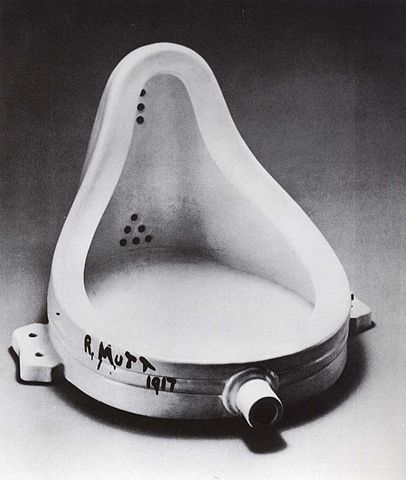
In a bold attempt to destroy the definition of art, he sought out to submit an outrageous art entry to an exhibition by the Society of Independent Artists in New York, 1917. This particular exhibition had rules that explicitly stated that all works submitted would be exhibited. With having 2500 submitted pieces, the exhibition was a massive event, and attracted the attention Duchamp wanted.
Whilst looking for his perfect exhibit, Duchamp came across a retail store which had a display of sanitary ware. He then purchased a standard ,white porcelain urinal and took it to his studio where he signed it with the pseudonym ‘R.Mutt’ and named the piece ‘Fountain’. Ironically, it is now the most memorable piece from the exhibit as its nonsensical nature outraged the exhibitors, who removed it from display after a short while.

L.H.O.O.Q. was another one of Duchamp’s most influential pieces. Labelled as a ‘cheap reproduction’ of the world renowned ‘Mona Lisa’, Duchamp defaced the subject with a comical moustache and goatee. Some interpret this as the conversion of a woman to man, linking it to the idea that Leonardo da Vinci’s sexuality was directed more favourably to men. Others argue that it was Duchamp’s rebellion against the traditional nature of art.
Additionally, the name itself, ‘L.H.O.O.Q.’ has been interpreted as a pun. It is argued that the letters sound similar to the french phrase “Elle a chaud au cul” which has multiple explicit translations. The letters have become words which translate to a devaluing male comment on the dignified woman depicted in the original photo.
Tristan Tzara
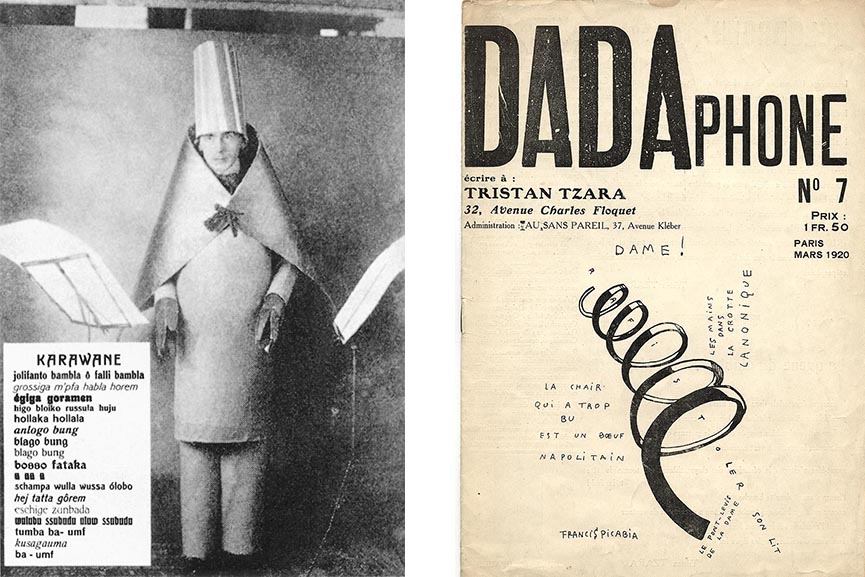
Tzara was a Romanian-born French poet known mainly as one of the founders of Dada. He produced numerous art pieces but his main contribution to the Dada movement was to publish manifestos that outlined the goals of Dada and spreading this to as wide of an audience as he could get. He arranged many vulgar and shocking performances at one of his local cafes using much deconstructed, nonsense language with the intention to shock his audience and a destroy all preconceived expectations they may have had about his performance.
Spontaneity exercise
Dada poetry rejected reason and logic and instead incorporated nonsense, irrationality, and intuition into its work.
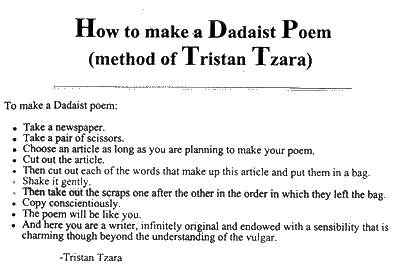
Tzara’s 1920 manifesto proposed to cut words from a newspaper and randomly select these words to create poetry, a process which is often used for this type of poetry today.
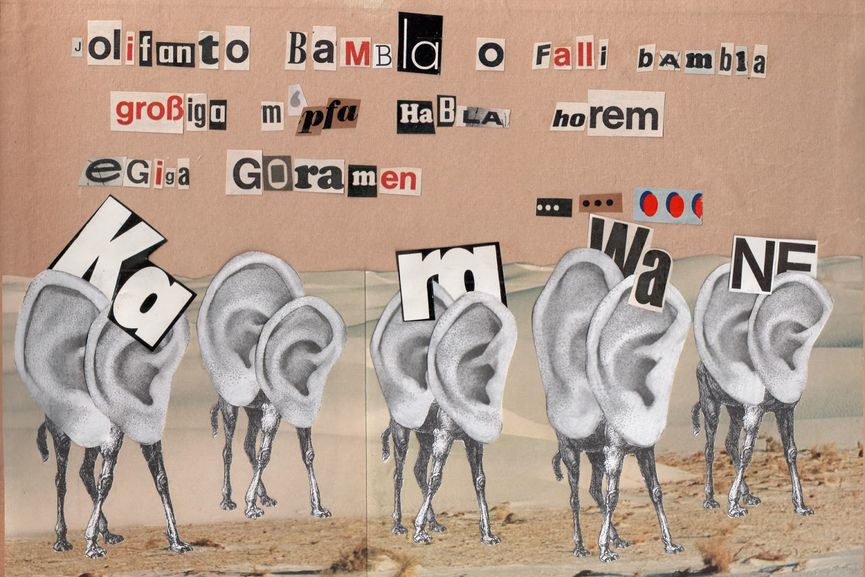
In response to the spontaneous nature of Dadaism, we were given a task to create one of these Dadaist-style poems.
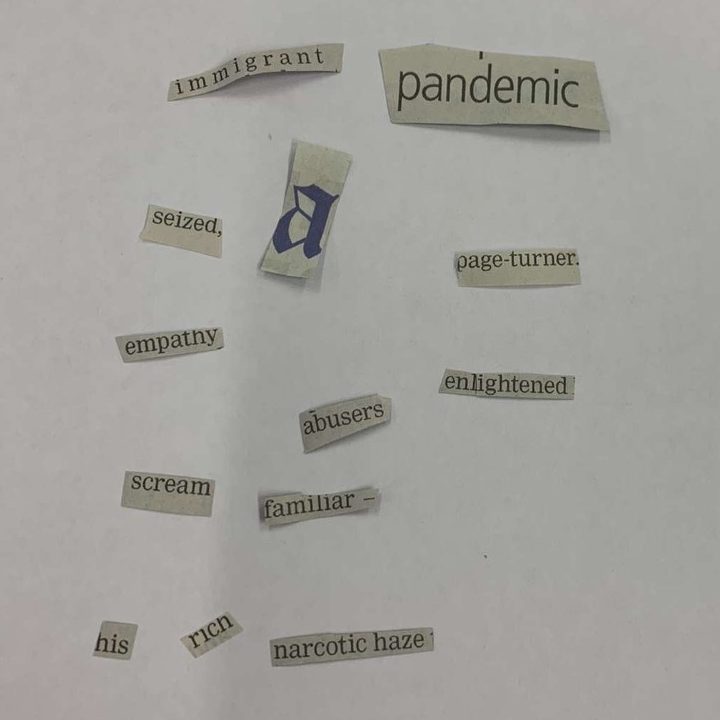
- I was given 5 minutes and a sheet of a newspaper.
- I cut out random letter and words
- Placed these words in a box.
- I randomly took out a word one at a time and placed it on the page, to create a ‘nonsense’ poem.
